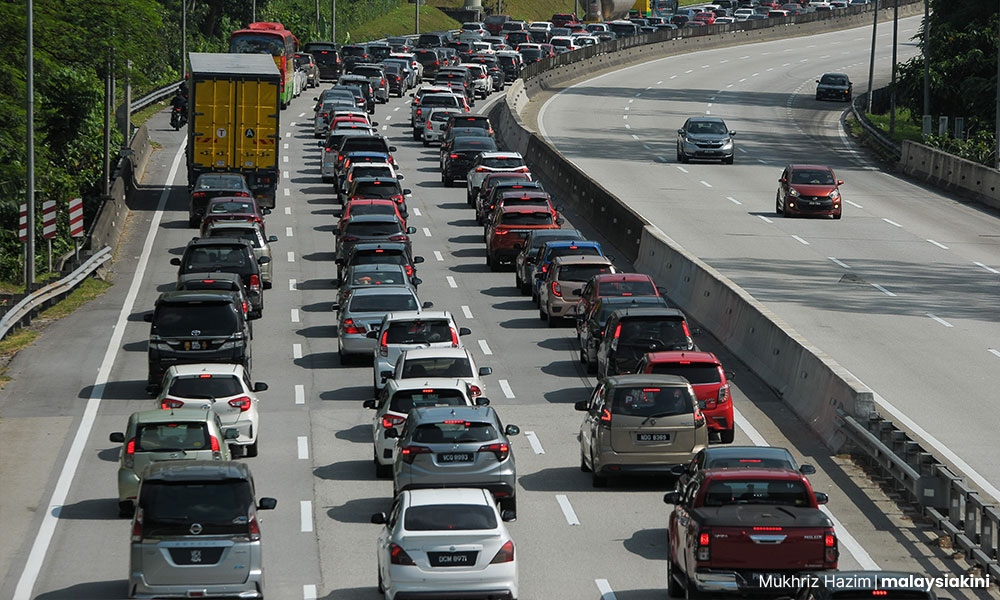The federal government should reconsider its funding for Penang’s overhead light rail transit (LRT) on financial and technical grounds.
After several failed attempts by the Penang state government to fund a bloated “Penang Transport Master Plan” (PTMP), it turned to the federal government to finance the LRT, the first project of the PTMP.
Most ordinary people would fully support the urgent need for Penang to have an efficient and affordable public transport system.
In fact, members of Penang Forum were the ones who suggested this initiative to the state government soon after it won the 2008 state election. Its representatives served pro bono in the Penang Transport Council.
Civil society, however, is strongly opposed to the revised PTMP that the Penang government is pushing, not only because the cost is overblown (in 2015, the project was estimated at RM46 billion and will surely cost more now).
It is also too car-centric and highway-focused and will not solve the transport and mobility challenges of Penang.

The public transport modes pushed by the private sector and proposed in the revised PTMP - elevated LRT and monorail systems to replace trams and buses - are inflexible and limited in coverage. Such transport modes are also financially exorbitant and not viable.
Not only that, the heavy concrete infrastructure for LRT and monorail is environmentally inappropriate and destructive for Penang, which is renowned for its architectural heritage and historical streetscape.
Cheaper, more effective alternatives
In 2018, a year after the new technology of autonomous rail transit (ART) was introduced in China, Penang Forum suggested to the state government to seriously consider adopting this system. Such a system would be easy and quick to build and highly flexible in terms of coverage. It would cost one-tenth that of an LRT. It would also be environmentally friendlier.
Yet, the state government resisted without sound reasons. It dithered and scrambled to raise RM10 billion to build a single line that would take many years to construct.
Meanwhile, Sarawak ran with the idea and will soon operate the country’s first ART system. The Star reported that the state’s 70km ART network would cost RM80 million per km.
Compare this to Penang’s proposed 20km LRT line estimated to cost RM10 billion, ie RM500 million per km, which is roughly equivalent to the RM540 million per km for the Kuala Lumpur LRT3 system.
And that is just for one line from Komtar to the airport. Are we now looking at RM25-30 billion for the LRT network to cover the entire state of Penang, including a cross-channel link?
Compare this to the original Penang transport blueprint prepared by consultants from Halcrow: they had estimated that the entire public transport system - trams (including elevated sections), buses and water taxis - for the whole of Penang state would come up to just RM10 billion.
As early as 2015, we highlighted the unrealistic ridership projections and the non-financial viability of the Komtar-airport LRT line.
The Gamuda-led SRS Consortium, which had proposed the line, had projected a totally unrealistic initial annual ridership of 42 million for a population catchment of about 250,000 people. With projected annual operation and maintenance costs of RM170 million and an average fare of RM4 per ride, the project was expected to break even.

However, if the ridership were 8 million - a more realistic number that we estimated - the deficit would rise to RM138 million.
That’s a quarter of the state government’s annual revenue. Significantly, a few years later, Gamuda reduced its projected ridership to 8 million.
Learn from Klang Valley experience
Despite the hundreds of billions of ringgit spent on the mass rapid transit (MRT), LRT, and monorails in the Klang Valley, Transport Minister Anthony Loke revealed that the public transport modal share there is only 15 percent.
It is common knowledge among transport experts that splashing money on an LRT network alone without putting in place proper supporting policies will not solve mobility problems.
Issues of connectivity, flexibility, first and last-mile accessibility, punctuality, priority lanes for public transport vehicles, and affordability have to be adequately addressed.
We urge the government not to repeat the mistakes of the Klang Valley public transport experience.
Given all this, the Penang LRT system should be meticulously reviewed not only for its claimed ability to resolve transport mobility but also because of the high costs involved.
At a time when Malaysia is facing challenging financial constraints and when ordinary people are struggling with their daily needs, the amount of funding required for the Penang LRT is exorbitant.
Do we need to spend extravagant sums on mega-projects that may not deliver promised results when better, cheaper, and faster alternatives are available? As the chief minister of Sarawak recently said, his state is ready to share its experience in this journey. - Mkini
LIM MAH HUI is an economist and former international banker. This article was originally published on Aliran.
The views expressed here are those of the author/contributor and do not necessarily represent the views of MMKtT.



No comments:
Post a Comment
Note: Only a member of this blog may post a comment.